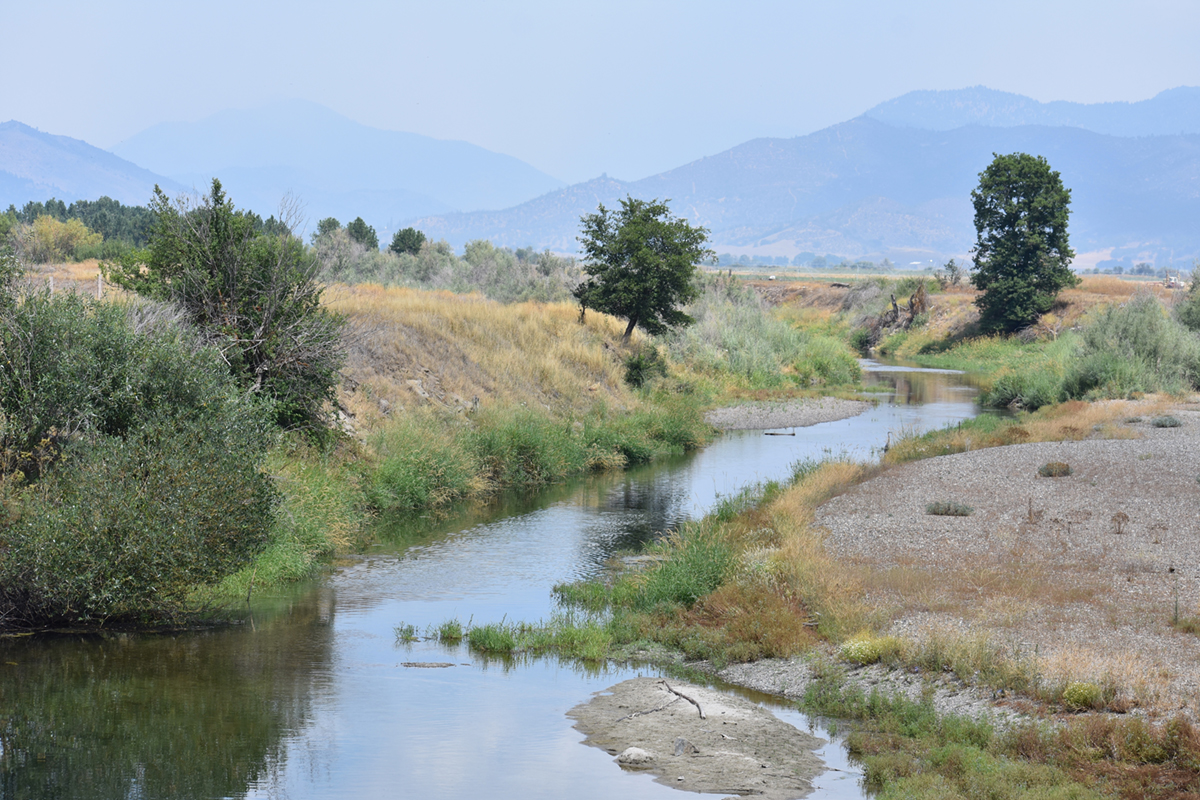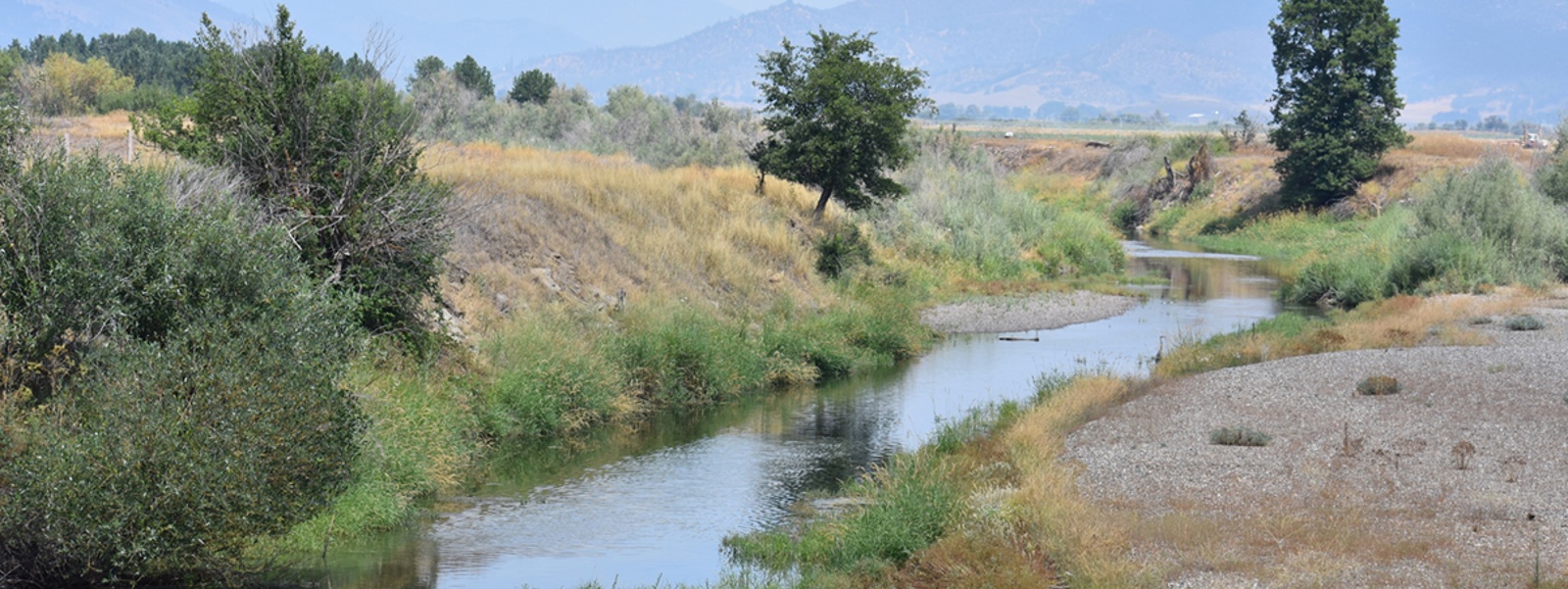State to consider Scott and Shasta river flows rules

Siskiyou County farmers who rely on water from the Scott River, above, and the Shasta River may face permanent instream flow requirements unless farmers and others reach voluntary agreements.
Photos/Jaclyn Fawaz

By Christine Souza
California water officials last week directed staff to create a report that outlines the scientific basis for development of permanent instream flow requirements on the Scott and Shasta rivers in Siskiyou County to aid salmon and steelhead trout.
In addition to developing the scientific basis report, the California State Water Resources Control Board asked staff to assess the economic impacts of baseline minimum flows and to continue modeling and developing information that could be used in the future to evaluate water year-specific minimum instream flows. The board also directed staff to obtain input on whether to extend the December 2023 emergency flow regulations for another year or implement a locally preferred alternative if it becomes available.
Farmers from the region called for a science-based approach to guide the requirements for river flows.
“We just want to continue to push that science must drive this process,” said Siskiyou County farmer Gary Black, a restoration and conservation consultant who farms along the Scott River. “We count on and trust you to ensure that this is a well driven, science-based process and that the model used includes accurate data that is adjusted over time.”
The action by the state water board is partially in response to petitions submitted in 2023 by the Karuk Tribe, Environmental Law Foundation, Pacific Coast Federation of Fishermen’s Associations and Institute of Fisheries Resources requesting that the state water board develop regulations to establish long-term flows to benefit fish.
At the meeting, a panel of petitioners, including Aaron “Troy” Hockaday, a member of the Karuk Tribal Council, urged the board to support permanent instream flow regulations.
In advocating for instream flow protections, Crystal Robinson, Klamath watershed specialist for the California Department of Fish and Wildlife, said fish populations are a fraction of what they were 50 years ago.
“While coho salmon numbers are showing a bit of improvement, in some brood years Chinook salmon populations are getting lower,” she said.
Robinson talked about other factors affecting fish, such as a need to improve spawning access.
In public comments to the board, Alexandra Biering, California Farm Bureau senior policy advocate, identified actions that should be taken when developing a regulation for long-term flows.
“When locals bring forward some of those potential solutions under an amended resolution, I would request that you and staff are transparent in your evaluation process for what parts are acceptable and what aren’t,” Biering said. “I also appreciate that the resolution directs staff to help develop or evaluate those baseline minimum flows, potential economic impacts in the region—all those things that are necessary for understanding the conditions that need to be addressed.”
Black and other farmers who spoke as part of a Siskiyou County Farm Bureau panel talked about short-term and long-term efforts to improve flows for fish. The panelists also asked for flexibility as they work with tribes, NGOs and others to negotiate voluntary agreements that include a more holistic approach to fish recovery outside of flows alone.
“Especially in the Scott (River) in a drought year, the GSA (Groundwater Sustainability Agency) model says you can eliminate agriculture entirely and you still wouldn’t hit the minimum flow for adult migration,” Black said, urging the board to be mindful of unintended consequences from the instream flow regulation in the short term and long term.
Ryan Walker, president of the Siskiyou County Farm Bureau, asked for a “robust” scientific report that addresses flows and the many other actions needed to recover fish.
“It is our hope that a voluntary solution may come out of this rather than long-term regulations,” said Walker, a rancher based in Montague. “I think we can come to compromised agreements that would likely be enforceable and that we can achieve.”
Farmers have facilitator-led conversations with tribes and NGOs and hope a compromise can be reached, Walker added.
“The tribes want flow, but they also want restoration and things that are more than flow that are going to lead to fish recovery,” Walker said. “I think we are having some really good and important conversations.”
Before a long-term regulation for flows is approved, Walker said the state water board between now and early January 2025 will likely move forward with a new round of flow requirements for the Scott and Shasta rivers. Affected water users say they plan to continue working with staff and others on the regulations, including identifying what works, what doesn’t and if there are alternatives.
“If there’s a compromise or a negotiated solution to the regulations, these have to happen between now and basically the first couple weeks of January,” Walker said.
Permanent, long-term flow requirements on the rivers, Walker said, “will control surface water diversions and also groundwater extractions, and that’s a new world.” Taking action to control use of groundwater affects the ongoing work that local agencies are doing to comply with the Sustainable Groundwater Management Act, he added.
Participating as part of the Farm Bureau panel, Siskiyou County farmer Brandon Fawaz talked about the economic impact of added water regulations when the region’s farmers already face low commodity prices and high input costs. “This is taking a toll on farmers,” he said.
For alfalfa hay, Fawaz said, the price is $215 a ton this year, a drop from $370 in 2022. In addition, he said the per-ton price for grain hay was $90 this year, a drop from $150 in 2022. As a beginning farmer in 2004, Fawaz said, “grain hay was $100 a ton to $120 a ton, so we’re below 2004 pricing.”
Despite the high costs facing farmers, Fawaz said he is hopeful that data and science will lead to a balanced solution.
“With the amount of data that we forecast being collected next year, I believe we will work through this process and have better tools in our toolbox to come up with a better solution that all sides can support, or at least be part of in the coming year,” Fawaz said.
Farmers who rely on water from the Scott and Shasta rivers have been subject to curtailments under a drought emergency regulation that limits surface-water diversions and groundwater pumping since 2021. The regulation, which is updated annually, prioritizes minimum flow recommendations from the CDFW to protect salmon and steelhead trout.
(Christine Souza is an assistant editor of Ag Alert. She may be contacted at csouza@cfbf.com.)




